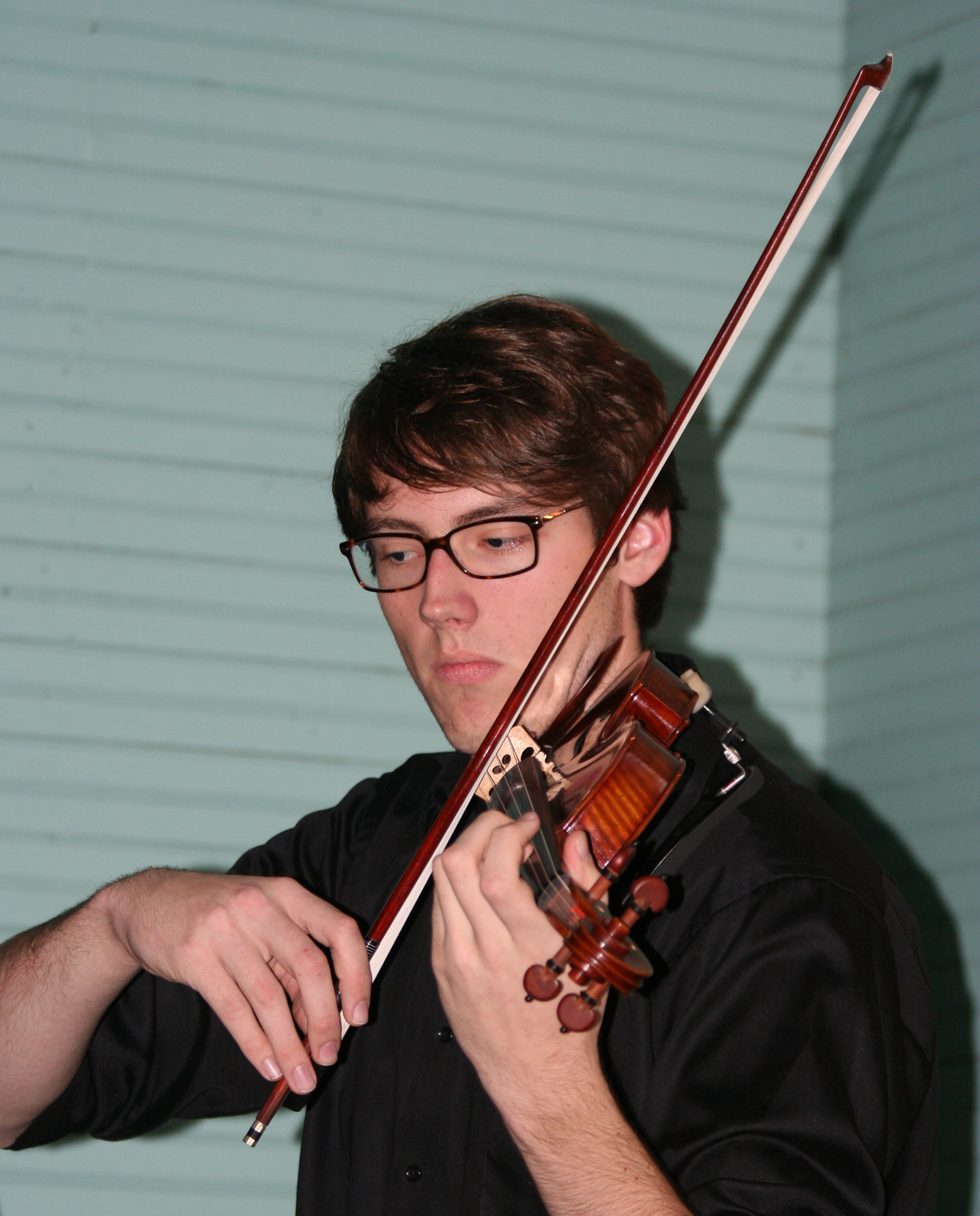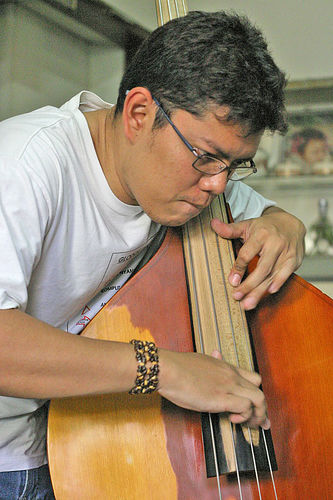|
Tonguing
Tonguing is a technique used with wind instruments to enunciate notes using the tongue on the palate or the reed or mouthpiece. A silent "tee" is made when the tongue strikes the reed or roof of the mouth causing a slight breach in the air flow through the instrument. If a more soft tone is desired, the syllable "da" (as in ''dou''ble) is preferred. The technique also works for whistling. Tonguing also refers to articulation, which is how a musician begins the note (punchy, legato, or a breath attack) and how the note is released (air release, tongued release, etc.) For wind players, articulation is commonly spoken of in terms of tonguing because the tongue is used to stop and allow air to flow in the mouth. Tonguing does not apply to non wind instruments, but articulation does apply to all instruments. An alteration called "double-tonguing" or "double-articulation" is used when the music being performed has many rapid notes in succession too fast for regular articulation. I ... [...More Info...] [...Related Items...] OR: [Wikipedia] [Google] [Baidu] |
Flutter-tonguing
Flutter-tonguing is a wind instrument tonguing technique in which performers flutter their tongue to make a characteristic "FrrrrrFrrrrr" sound. The effect varies according to the instrument and at what volume it is played, ranging from cooing sounds on a recorder to an effect similar to the growls used by jazz musicians. Notation In sheet music, the technique is usually indicated with the standard tremolo markings on a note alongside a text instruction to flutter the note. The German marking "Flatterzunge" is often abbreviated to "Flz." or "Flt.". The Italian "frullato" is sometimes abbreviated to "frull". In English, the most common indication is "f.t." Other markings that composers have used to indicate flutter tonguing include: coupe de lange roulé, en roulant la langue, tremolo dental, tremolo avec la langue, tremolo roulé, vibrata linguale, vibrando, and colpo di lingua among others. However, simply writing (3-line) tremolo marks on all rhythmic values without other ind ... [...More Info...] [...Related Items...] OR: [Wikipedia] [Google] [Baidu] |
Articulation (music)
Articulation is a fundamental musical parameter that determines how a single note or other discrete event is sounded. Articulations primarily structure an event's start and end, determining the length of its sound and the shape of its attack and decay. They can also modify an event's timbre, dynamics, and pitch. Musical articulation is analogous to the articulation of speech, and during the Baroque and Classical periods it was taught by comparison to oratory. Western music has a set of traditional articulations that were standardized in the 19th century and remain widely used. Composers are not limited to these, however, and may invent new articulations as a piece requires. When writing electronic and computer music, composers can design articulations from the ground up. In addition to the following instructions given by composers, performers choose how to articulate the events of a score independently, in accordance with their interpretation of it. Until the 17th ... [...More Info...] [...Related Items...] OR: [Wikipedia] [Google] [Baidu] |
Slur (music)
A slur is a symbol in Western culture, Western musical notation indicating that the note (music), notes it embraces are to be played without separation (that is, with legato articulation (music), articulation). A slur is denoted with a curved line (geometry), line generally placed over the notes if the stem (music), stems point downward, and under them if the stems point upwards. The example below shows two measures in with a slur for each measure: : \relative c'' Performance Slurs mean different things for different instruments: *For bow (music), bowed string instruments, the notes should be played in one bow stroke. * For plucked string instruments, such as guitars, the notes should be played without plucking the individual strings (hammer-ons and pull-offs). * For wind instruments, the notes should be played without re-articulating each note (tonguing), except for the slide trombone (and other instruments that control the pitch with a slide), on which only certain ... [...More Info...] [...Related Items...] OR: [Wikipedia] [Google] [Baidu] |
Notes Inégales
In music, ''notes inégales'' is a performance practice, mainly from the Baroque and Classical music eras, in which some notes with equal written time values are performed with unequal durations, usually as alternating long and short. The practice was especially prevalent in France in the 17th and 18th centuries, with appearances in other European countries at the same time. It reappeared as the standard performance practice in the 20th century in jazz. The phrase notes inégales means "unequal notes" in French. History Pre-modern era The practice of notating pairs of unequal note lengths as pairs with equal notated value may go as far back as the earliest music of the Middle Ages; indeed some scholars believe that some plainchant of the Roman Catholic Church, including Ambrosian hymns, may have been performed as alternating long and short notes. This interpretation is based on a passage in Saint Augustine where he refers to the Ambrosian hymns as being in ''tria temporum ... [...More Info...] [...Related Items...] OR: [Wikipedia] [Google] [Baidu] |
Glissando
In music, a glissando (; plural: ''glissandi'', abbreviated ''gliss.'') is a glide from one pitch to another (). It is an Italianized musical term derived from the French ''glisser'', "to glide". In some contexts, it is distinguished from the continuous portamento. Some colloquial equivalents are slide, sweep (referring to the "discrete glissando" effects on guitar and harp, respectively), bend, smear, rip (for a loud, violent gliss to the beginning of a note), lip (in jazz terminology, when executed by changing one's embouchure on a wind instrument), plop, or falling hail (a glissando on a harp using the back of the fingernails). On wind instruments, a scoop is a glissando ascending to the onset of a note achieved entirely with the embouchure. Portamento Prescriptive attempts to distinguish the glissando from the portamento by limiting the former to the filling in of discrete intermediate pitches on instruments like the piano, harp, and fretted stringed instruments have run u ... [...More Info...] [...Related Items...] OR: [Wikipedia] [Google] [Baidu] |
Trill Consonant
In phonetics, a trill is a consonantal sound produced by vibrations between the active articulator and passive articulator. Standard Spanish as in , for example, is an alveolar trill. A trill is made by the articulator being held in place and the airstream causing it to vibrate. Usually a trill vibrates for 2–3 contacts, but may be up to 5, or even more if geminate. However, trills may also be produced with only one contact. While single-contact trills are similar to taps and flaps, a tap or flap differs from a trill in that it is made by a muscular contraction rather than airstream. Phonemic trills Trill consonants included in the International Phonetic Alphabet: * – Voiced alveolar trill * – Voiceless alveolar trill * – Voiced bilabial trill * – Voiceless bilabial trill * – Voiced retroflex trill * – Voiced uvular trill * – Voiceless uvular trill * – voiced epiglottal trill * – voiceless epiglottal trill In addition, * – velopharyngeal ... [...More Info...] [...Related Items...] OR: [Wikipedia] [Google] [Baidu] |
Louré
Playing the violin entails holding the instrument between the jaw and the collar bone (see below for variations of this posture). The strings are sounded either by drawing the bow across them (''arco''), or by plucking them (''pizzicato''). The left hand regulates the sounding length of the strings by stopping them against the fingerboard with the fingers, producing different pitches. Posture It is possible to play the violin holding it in a variety of ways. Most players hold the lower bout of the instrument between the left shoulder and the jaw, often assisted by a semi-permanently attached chinrest and detachable shoulder rest. If held properly under the chin, the violinist can let go of the instrument with their hands and it will stay there firmly. Other common ways to hold the instrument include the seated Carnatic attitude, with the scroll resting on a foot, or the dancing-master's " kit" or "''pochette''" hold, along the forearm, by the lower margin of the rib cage, ev ... [...More Info...] [...Related Items...] OR: [Wikipedia] [Google] [Baidu] |
Pizzicato
Pizzicato (, ; translated as "pinched", and sometimes roughly as "plucked") is a playing technique that involves plucking the strings of a string instrument. The exact technique varies somewhat depending on the type of instrument : * On bowed string instruments it is a method of playing by plucking the strings with the fingers, rather than using the bow. This produces a very different sound from bowing, short and percussive rather than sustained. * On keyboard string instruments, such as the piano, pizzicato may be employed (although rarely seen in traditional repertoire, this technique has been normalized in contemporary music, with ample examples by George Crumb, Toru Takemitsu, Helmut Lachenmann, and others) as one of the variety of techniques involving direct manipulation of the strings known collectively as "string piano". * On the guitar, it is a muted form of plucking, which bears an audible resemblance to pizzicato on a bowed string instrument with its relatively short ... [...More Info...] [...Related Items...] OR: [Wikipedia] [Google] [Baidu] |
Staccato
Staccato (; Italian for "detached") is a form of musical articulation. In modern notation, it signifies a note of shortened duration, separated from the note that may follow by silence. It has been described by theorists and has appeared in music since at least 1676. Notation In 20th-century music, a dot placed above or below a note indicates that it should be played staccato, and a wedge is used for the more emphatic staccatissimo. However, before 1850, dots, dashes, and wedges were all likely to have the same meaning, even though some theorists from as early as the 1750s distinguished different degrees of staccato through the use of dots and dashes, with the dash indicating a shorter, sharper note, and the dot a longer, lighter one. A number of signs came to be used in the late 19th and early 20th centuries to discriminate more subtle nuances of staccato. These signs involve various combinations of dots, vertical and horizontal dashes, vertical and horizontal wedges, and t ... [...More Info...] [...Related Items...] OR: [Wikipedia] [Google] [Baidu] |
Wind Instrument
A wind instrument is a musical instrument that contains some type of resonator (usually a tube) in which a column of air is set into vibration by the player blowing into (or over) a mouthpiece set at or near the end of the resonator. The pitch of the vibration is determined by the length of the tube and by manual modifications of the effective length of the vibrating column of air. In the case of some wind instruments, sound is produced by blowing through a reed; others require buzzing into a metal mouthpiece, while yet others require the player to blow into a hole at an edge, which splits the air column and creates the sound. Methods for obtaining different notes * Using different air columns for different tones, such as in the pan flute. These instruments can play several notes at once. * Changing the length of the vibrating air column by changing the length of the tube through engaging valves ''(see rotary valve, piston valve)'' which route the air through additional tubing ... [...More Info...] [...Related Items...] OR: [Wikipedia] [Google] [Baidu] |





